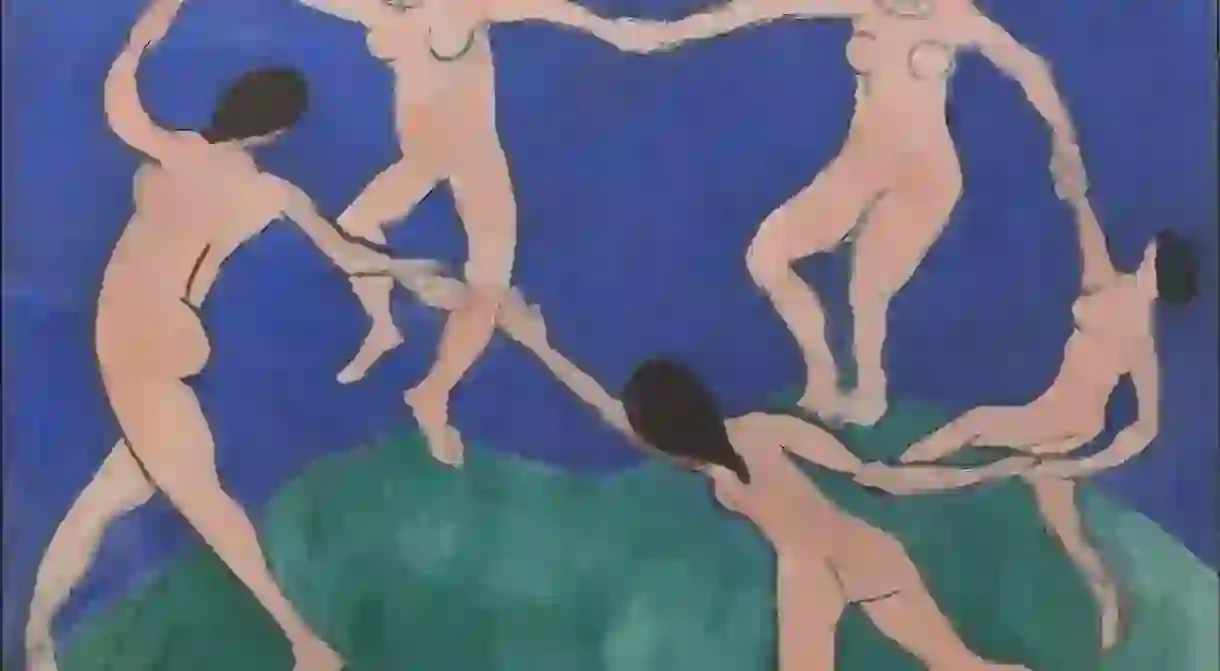Can Art Really Make You Happier?

Studies show that art can make you happier – whether you’re creating you own art, or enjoying someone else’s. So before you discount art as “intimidating” or “unimportant,” consider the following ways in which it may actually improve your outlook.
Did you know – Culture Trip now does bookable, small-group trips? Pick from authentic, immersive Epic Trips, compact and action-packed Mini Trips and sparkling, expansive Sailing Trips.
A study by neurobiologist and University College London professor Semir Zeki found that looking at a work of art can actually have the same psychological effect as the euphoric experience of romantic love.

2D1WFTN -PHOTO TAKEN 04APR06- Museum visitors look at “Adele Bloch-Bauer I,” a 1907 painting by Austrian artist Gustav Klimt, at a special exhibition of Klimt paintings at the Los Angeles County Museum of Art in Los Angeles in this April 4, 2006 file photo. [The portrait has been purchased by cosmetics magnate Ronald S. Lauder for $135 million, the highest amount ever paid for a painting, The New York Times reported June 19, 2006.] | © REUTERS / Alamy Stock Photo
Professor Zeki showed 30-odd subjects a careful selection of artworks while he scanned their brains’ reactions to them. From classically ‘beautiful’ paintings like Botticelli’s The Birth of Venus to contemplative works by Leonardo da Vinci and Hieronymus Bosch’s fantastical triglyphs,Zeki found that the visual stimulation of looking at something the subject considered favorable resulted in increased levels of dopamine (“a neurotransmitter that helps control the brain’s reward and pleasure centers”) and heightened activity in the brain’s frontal cortex. In other words, looking at art triggered the same kind of activity in the brain’s pleasure center as the experience of being in love, and even recreational drug use.
In a subsequent experiment, Zeki found that works of art generally perceived as ‘disturbing’ or ‘ugly’ (works by Bosch, for example) triggered noticeably less brain activity than Botticelli’s glowing depiction of the Roman goddess of love; however, the subjects’ brain scans still reflected stimulation. “The reaction was immediate. What we found was the increase in blood flow was in proportion to how much the painting was liked,” Zeki reported.

So whether you choose to self-reflect with Agnes Martin, float amongst Monet’s Water Lillies, melt into one of Salvador Dalí’s dreamscapes, or adventure into the pastoral American wilderness with Thomas Cole, exploring the styles, eras, and artists that evoke the best responses for you may be time well spent.
And what of artists themselves? Scientific evidence also suggests that creating art may elevate your mood, clarify your ability to problem solve, and increase open-mindedness. You don’t need to garner marketable success to consider yourself creative, and your subsequent experience of well-being can manifest in any which way – from peace to accomplishment to pride. Generally, mental health professionals agree that there’s a correlation between creative expression and positivity. These “increases in positive mood broaden attention and allow us to see more possible solutions to creative problems,” says Dr. Shelley Carson.

As for the archetype of the ‘brooding artist,’ it’s true that many famous creative figures have notoriously battled serious mental illnesses. As Norwegian Expressionist Edvard Munch explained, “Without anxiety and illness, I am a ship without a rudder…my sufferings are part of my self and my art.”
Perhaps the flip-side correlation between creativity and unhappiness comes from the artist’s willingness to confront their insecurities, fears, anger, and despair. They may use art as a form of alternative therapy for a pre-existing condition, or maybe the disappointment of criticism influenced their self-worth. Van Gogh, who is thought to have suffered from multiple psychological disorders and whose death is widely considered a suicide, revealed: “I put my heart and my soul into my work, and have lost my mind in the process.”

So can art really make you happier? It can, but it’s not guaranteed – especially when the jury is indefinitely out on what ‘art’ or ‘happiness’ even is. But learning to embrace your inner artist won’t automatically transform you into a lonely, tortured genius. Rather, developing an appreciation for art may just lead you to the discovery of a more self-reflective, contemplative, expressive version of yourself.













